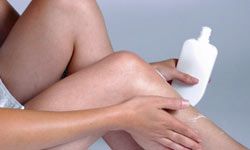Think of your skin as a permanent ensemble -- it has the ability to protect the body, regulate internal temperature and pretty much go with anything. But sometimes an outfit simply doesn't end up looking the way you want it to, and such is the case with certain dermatological conditions such as eczema.
There's no cure for eczema, a recurring condition that causes itchy, dry skin and leads to redness, scaling and sometimes oozing. The really frustrating part about eczema is that the more you scratch, the more irritated your skin becomes.
Advertisement
Think about a childhood bout of the itchy hell that is chicken pox, or even a case of poison ivy. Parents use MacGyver-like solutions when thinking of innovative ways to prevent children from scratching. They smother their offspring in oatmeal, tape oven mitts around their hands, and drench them in ice baths. Unlike chicken pox, which eventually runs its course, itchy eczema flare-ups will always lie dormant for children and adults affected with the condition. Since most people don't want to go to work or school covered in chalk-pink calamine lotion, one of the best ways to avoid sudden eczema outbreaks is to keep skin moist and clean.
Moisturizing eczema is key to keeping your "outerwear" looking (and feeling) its best. Scratching only worsens and intensifies the disorder, so making sure skin stays soft and supple helps manage eczema flare-ups.
You only get one set of skin in this life, regardless of its condition, so it's up to you to make it work. Learn about the ins and outs of moisturizing eczema on the next page.


